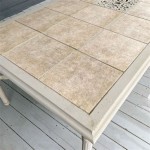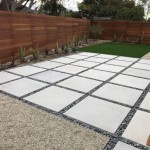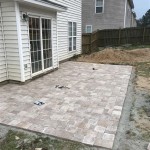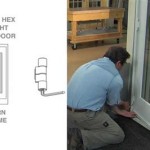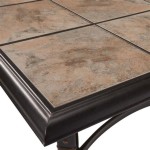Understanding Deck and Patio Fly Trapstik: A Comprehensive Guide
Deck and patio life offers a sanctuary for relaxation and entertainment, often becoming an extension of the indoor living space. However, the presence of flies can quickly disrupt this idyllic setting. Flies, attracted to food odors, decaying organic matter, and even light, can become a persistent nuisance, impacting the enjoyment of outdoor spaces. While various fly control methods exist, the Deck and Patio Fly Trapstik presents a specific approach to addressing this problem. This article aims to provide a comprehensive understanding of the Deck and Patio Fly Trapstik, its mechanics, advantages, limitations, and optimal usage.
The Deck and Patio Fly Trapstik is designed as an outdoor fly control solution. Unlike indoor fly traps that may rely on light or bait to lure insects, the Trapstik is typically characterized by its visual attractant, often a bright, contrasting color and a sticky adhesive coating. The design allows the Trapstik to be hung or placed in areas where flies are prevalent, aiming to intercept and capture them as they fly around.
The underlying principle of the Deck and Patio Fly Trapstik is simple: attract, capture, and eliminate. The Trapstik’s efficacy stems from its ability to exploit flies' natural behaviors and tendencies. By understanding these behaviors, users can strategically place the Trapstik to maximize its impact and minimize fly populations in their outdoor living areas.
Mechanism of Action: Attraction, Capture, and Elimination
The Deck and Patio Fly Trapstik operates on a multi-faceted approach to fly control, combining visual attraction with a physical trapping mechanism. This process can be broken down into three distinct stages: attraction, capture, and elimination.
The initial step involves attracting flies to the Trapstik. This is primarily achieved through visual cues. The Trapstik's bright color, often yellow or a similar vibrant hue, mimics the appearance of flowers or other food sources that attract flies. This visual lure is designed to draw flies in from a distance, enticing them to investigate the Trapstik as a potential source of sustenance.
Upon approaching the Trapstik, flies encounter the second stage: capture. The Trapstik's surface is coated with a strong, non-drying adhesive. When a fly lands on the sticky surface, it becomes trapped, unable to escape. The adhesive is formulated to be highly effective in capturing flies of various sizes and types, ensuring that once an insect lands on the Trapstik, it is effectively immobilized.
The final stage is elimination. Once trapped in the adhesive, the fly is unable to free itself. Over time, the fly will die, effectively removing it from the fly population in the area. The Trapstik continues to capture flies until its surface is saturated, requiring replacement. The non-drying nature of the adhesive ensures that the Trapstik remains effective for an extended period, providing continuous fly control.
The effectiveness of the Trapstik relies heavily on proper placement. Understanding fly behavior, such as their flight patterns and preferred locations, is crucial for optimizing the Trapstik's performance.
Advantages of Using Deck and Patio Fly Trapstik
The Deck and Patio Fly Trapstik offers several advantages as a fly control solution, making it a popular choice for many homeowners. These advantages range from ease of use and environmental considerations to cost-effectiveness and minimal maintenance.
One of the primary benefits of the Trapstik is its ease of use. Unlike some fly control methods that require mixing chemicals, setting up complex traps, or regular maintenance, the Trapstik is ready to use straight out of the package. Simply hang or place the Trapstik in a strategic location, and it immediately begins attracting and capturing flies. There is no need for specialized knowledge or equipment, making it accessible to a wide range of users.
Another significant advantage is its environmental friendliness. The Trapstik does not rely on insecticides or harmful chemicals to kill flies. Instead, it uses a physical trapping mechanism, reducing the risk of exposure to pesticides for humans, pets, and beneficial insects. This makes it a more environmentally responsible option compared to chemical-based fly control methods.
Cost-effectiveness is another key benefit. Trapstiks are relatively inexpensive compared to other fly control solutions, such as electronic traps or professional pest control services. A single Trapstik can provide weeks or even months of fly control, making it a budget-friendly option for homeowners. Furthermore, the lack of moving parts or electronic components means there is no need for batteries or electricity, further reducing costs.
Minimal maintenance is another appealing aspect. Once the Trapstik is in place, it requires very little attention. There is no need to empty traps, replace bait, or perform regular cleaning. The Trapstik simply needs to be replaced when it becomes saturated with flies, making it a convenient and hassle-free fly control solution.
Finally, the discreet nature of the Trapstik is often appreciated. While it is designed to be visually attractive to flies, its appearance is generally unobtrusive to humans. It can be placed in outdoor areas without being an eyesore, blending in with the surrounding environment.
Limitations and Considerations for Optimal Use
While the Deck and Patio Fly Trapstik offers several advantages, it is important to acknowledge its limitations and consider certain factors to ensure optimal use. Understanding these limitations will help users make informed decisions about whether the Trapstik is the right fly control solution for their specific needs and how to use it most effectively.
One of the primary limitations is its limited range of effectiveness. The Trapstik only attracts flies within a relatively small radius. This means that multiple Trapstiks may be required to effectively control fly populations in larger outdoor areas. Strategic placement is crucial to maximize the Trapstik's impact and ensure that it is positioned in areas where flies are most prevalent.
Another consideration is the Trapstik's susceptibility to environmental factors. Wind, rain, and direct sunlight can all affect its performance. Strong winds can reduce the Trapstik's ability to attract flies, while rain can wash away the adhesive, rendering it ineffective. Direct sunlight can cause the adhesive to dry out prematurely, shortening the Trapstik's lifespan. Therefore, it is important to protect the Trapstik from these elements as much as possible.
The Trapstik's effectiveness can also be influenced by competition from other attractants. If there are other attractive food sources or breeding sites in the area, flies may be less likely to be drawn to the Trapstik. Addressing these underlying issues, such as cleaning up food debris and eliminating breeding sites, can significantly enhance the Trapstik's performance.
Aesthetic concerns may also be a factor for some users. While the Trapstik is designed to be unobtrusive, the sight of dead flies stuck to its surface can be unappealing. Regular replacement of the Trapstik can help to mitigate this issue, ensuring that it remains relatively clean and visually acceptable.
Finally, it is important to remember that the Trapstik is not a comprehensive fly control solution. While it can effectively reduce fly populations, it is unlikely to eliminate them entirely. Integrating the Trapstik with other fly control methods, such as sanitation practices and the use of screens, can provide more complete and long-lasting results.
In summary, the Deck and Patio Fly Trapstik is a valuable tool in managing fly populations in outdoor living spaces. Its ease of use, environmental friendliness, and cost-effectiveness make it an attractive option for many homeowners. However, understanding its limitations and considering factors such as placement, environmental conditions, and competition from other attractants are crucial for maximizing its effectiveness. When used strategically and in conjunction with other fly control measures, the Trapstik can contribute to a more enjoyable and fly-free outdoor experience.

Deck And Patio Fly Trapstik

Rescue Trapstik For Wasps Mud Daubers And Carpenter Bees At Tractor Supply Co

Rescue Deck Patio Fly Trapstik Outdoor Hanging Trap

Rescue Deck Patio Fly Trapstik

Deck And Patio Fly Trapstik

Deck And Patio Fly Trapstik

Deck Patio Fly Trapstik

Rescue Deck Patio Fly Trapstik Outdoor Hanging Trap

Deck And Patio Fly Trapstik

Rescue Deck And Patio Fly Trapstik At Tractor Supply Co
See Also

